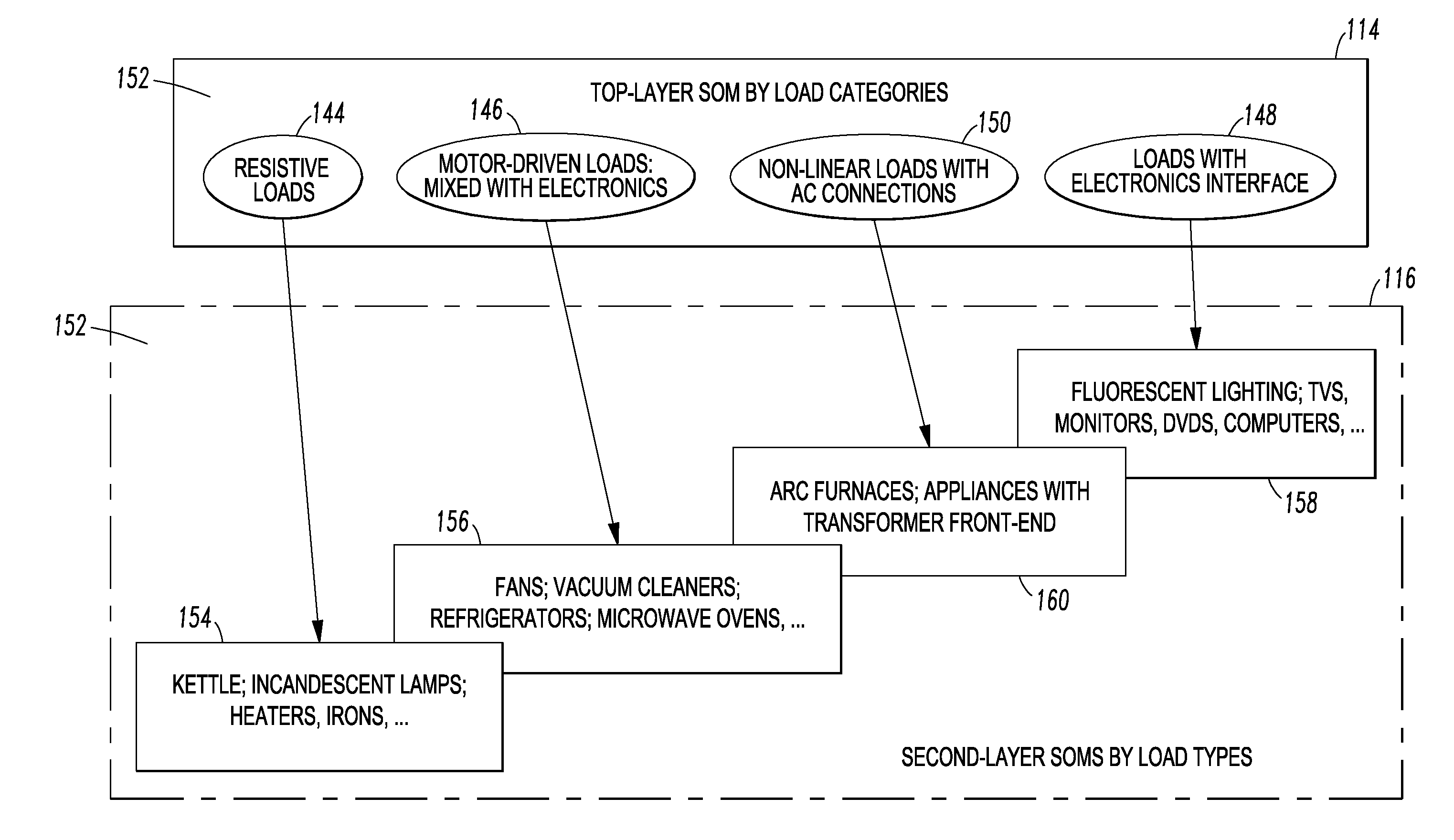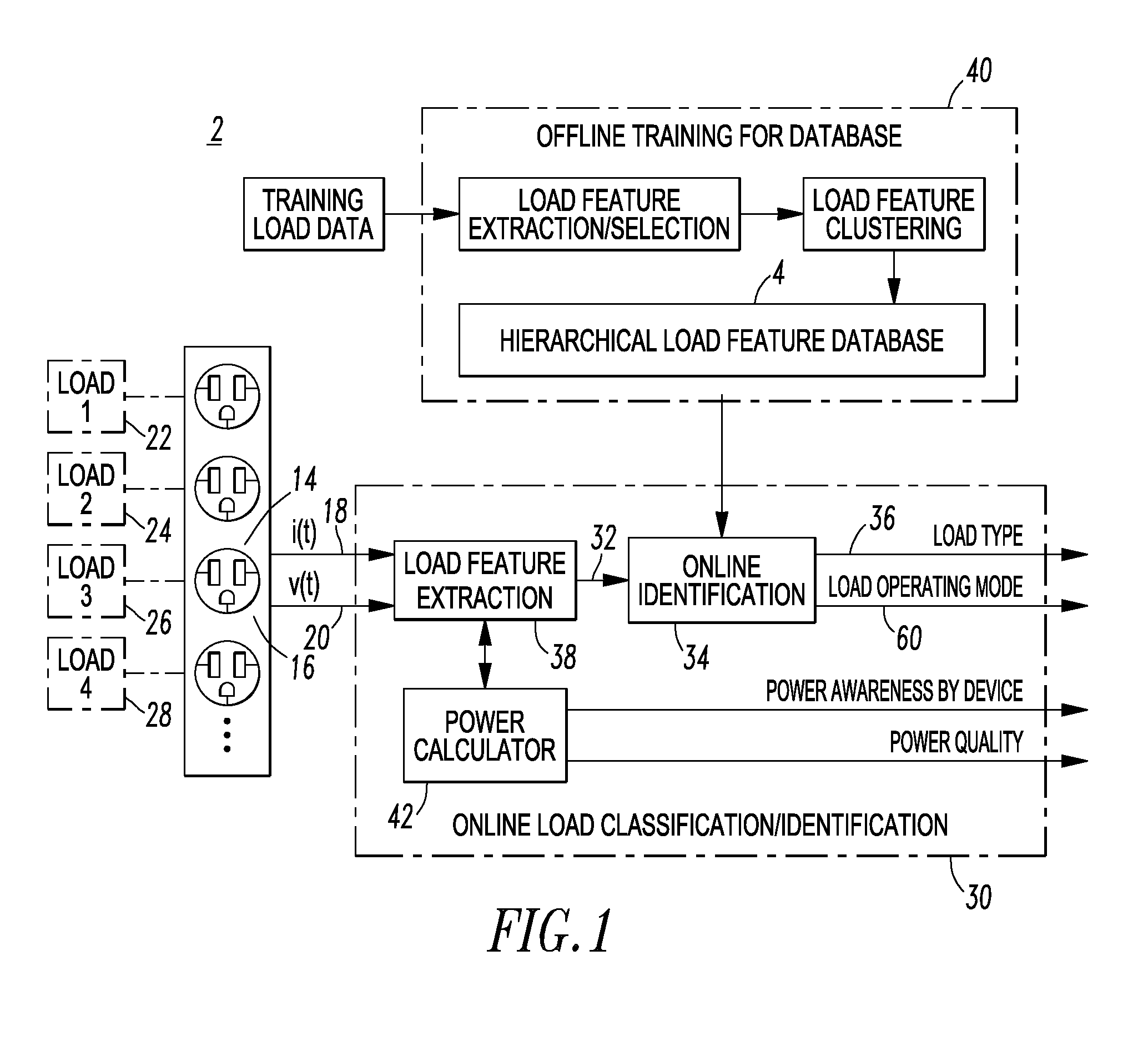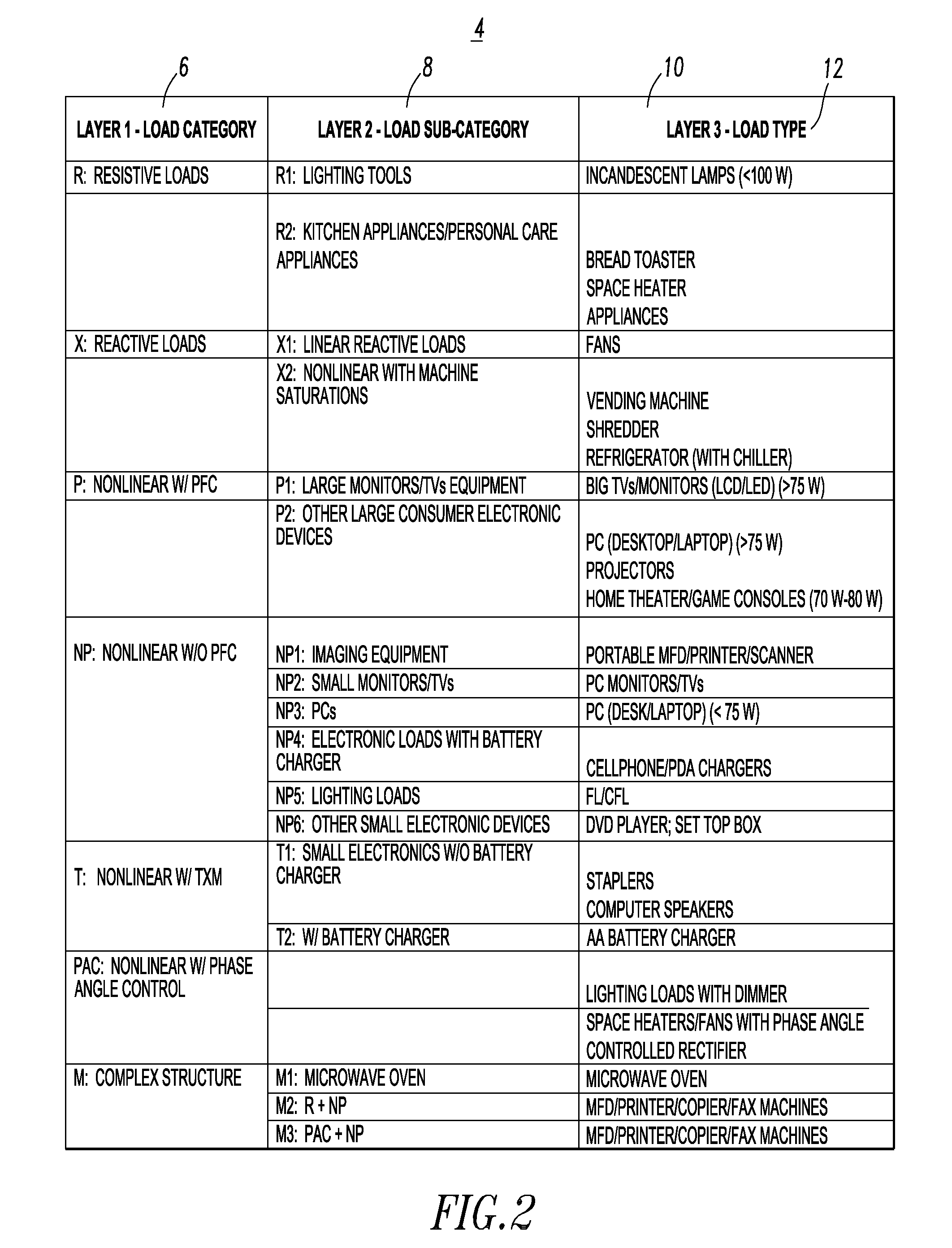System and method employing a self-organizing map load feature database to identify electric load types of different electric loads
a technology of load feature database and self-organization, applied in the field of methods of identifying electric load types of electric loads, can solve the problems of inability to explicitly address and solve the difficulty of known techniques, and inability to accurately identify the load type of electric load inside commercial buildings. accuracy, robustness and applicability disadvantages
- Summary
- Abstract
- Description
- Claims
- Application Information
AI Technical Summary
Benefits of technology
Problems solved by technology
Method used
Image
Examples
Embodiment Construction
[0038]As employed herein, the term “number” shall mean one or an integer greater than one (i.e., a plurality).
[0039]As employed herein, the term “processor” shall mean a programmable analog and / or digital device that can store, retrieve, and process data; a computer; a workstation; a personal computer; a microprocessor; a microcontroller; a microcomputer; a central processing unit; a mainframe computer; a mini-computer; a server; a networked processor; or any suitable processing device or apparatus.
[0040]The disclosed concept is described in association with example loads and example load features, although the disclosed concept is applicable to a wide range of loads and a wide range of load features.
[0041]The disclosed concept provides a method and system to identify electric load types, load operating modes and / or load health, by utilizing voltage and current signals of loads and suitable data processing and / or pattern recognition processes. This enables a wide range of MELs' iden...
PUM
 Login to View More
Login to View More Abstract
Description
Claims
Application Information
 Login to View More
Login to View More - R&D
- Intellectual Property
- Life Sciences
- Materials
- Tech Scout
- Unparalleled Data Quality
- Higher Quality Content
- 60% Fewer Hallucinations
Browse by: Latest US Patents, China's latest patents, Technical Efficacy Thesaurus, Application Domain, Technology Topic, Popular Technical Reports.
© 2025 PatSnap. All rights reserved.Legal|Privacy policy|Modern Slavery Act Transparency Statement|Sitemap|About US| Contact US: help@patsnap.com



